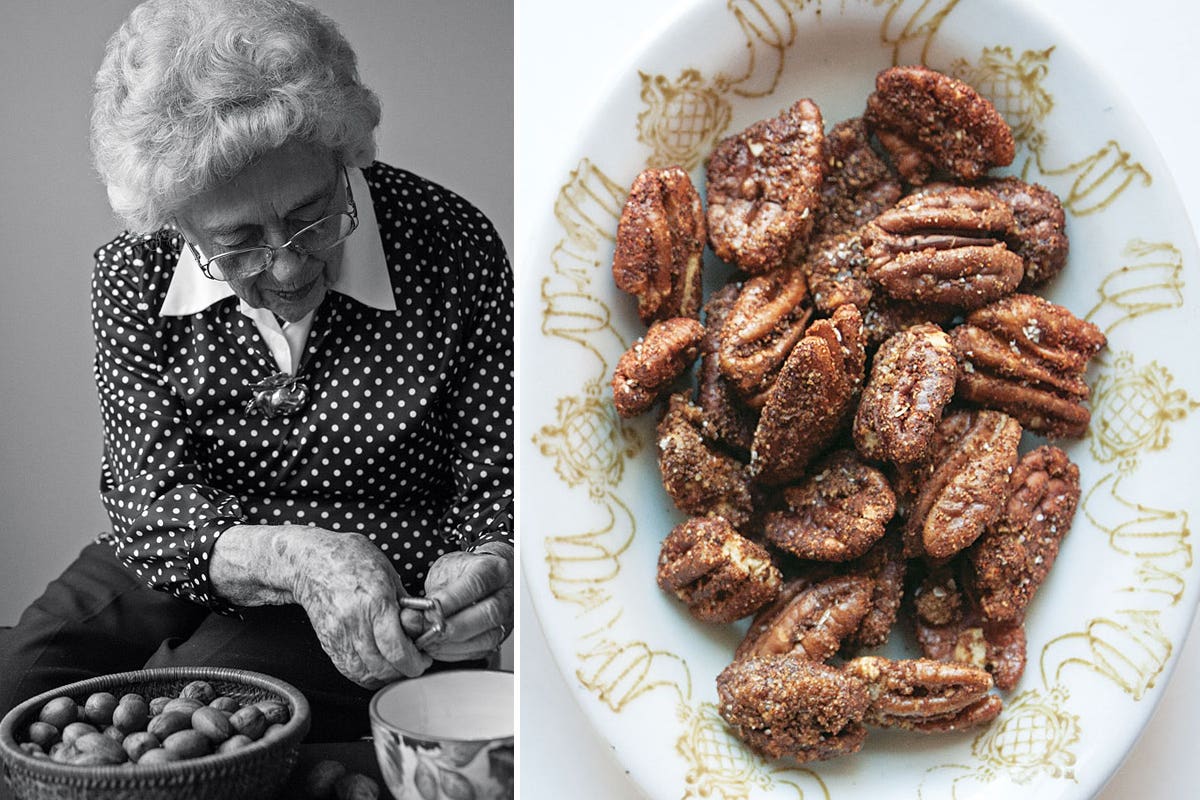
Southern Belle
The pecan, the South’s favorite nut, adds buttery, earthy richness to all sorts of holiday foods
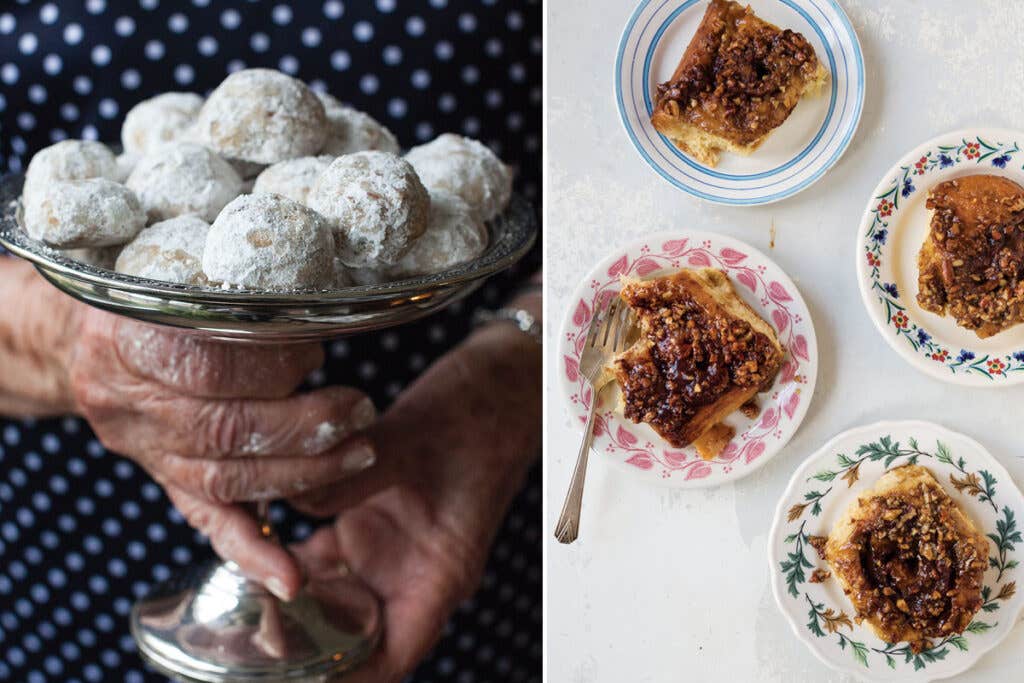
On a cool, wet November morning at the height of the pecan-harvesting season, Al Pearson is showing me around the central Georgia farm that has been in his family for five generations. The scale of the agriculture—2,500 acres of Elliotts, Stuarts, Schleys, Desirables, and other pecan varieties—puts me in a state of nutty wonder. Pearson, a garrulous 63-year-old, is talking up a storm while driving his Ford pickup so furiously through a pecan grove that I fear a tree limb might break the windshield. Stopping his chatter and his truck for a minute, he cocks his ear to discern the sound of the harvesting equipment he wants me to see. The machines are out there. He senses them with his finely tuned antenna. Then he hits the gas and goes back to his stories.
In a good year, Pearson Farm, which spreads out around the town of Fort Valley south of Macon, will harvest between 2 and 3.5 million pounds of pecans, making it one of the top growers in America's number one state for pecan production. Many of the nuts will be shipped unshelled to China in 1,200- to 1,400-pound bags to be eaten primarily out of hand. (In recent years, Chinese demand for pecans has sent prices to historic highs, and a few of Pearson's pistol-packing farmer buddies have chased nut bandits off their land.) Some will turn up in gourmet gift baskets or be transformed into cookies, cakes, and candies by home cooks in the South and beyond. And some, Pearson informs me proudly, will end up on the menus of high-end establishments like Thomas Keller's New York City restaurant Per Se, where they star in Keller's high falutin version of bourbon pecan pie. We climb out of the truck, and I notice Pearson watching his step. When he tells me that each nut in this pecan-carpeted orchard is worth a nickel, I'm floored. (In 2011, during the height of the pecan boom, unshelled pecans were fetching an average of $2.43 a pound.) To think I used to sell my family's pecans for a quarter a pound back in the 1960s. From here on, I tiptoe.
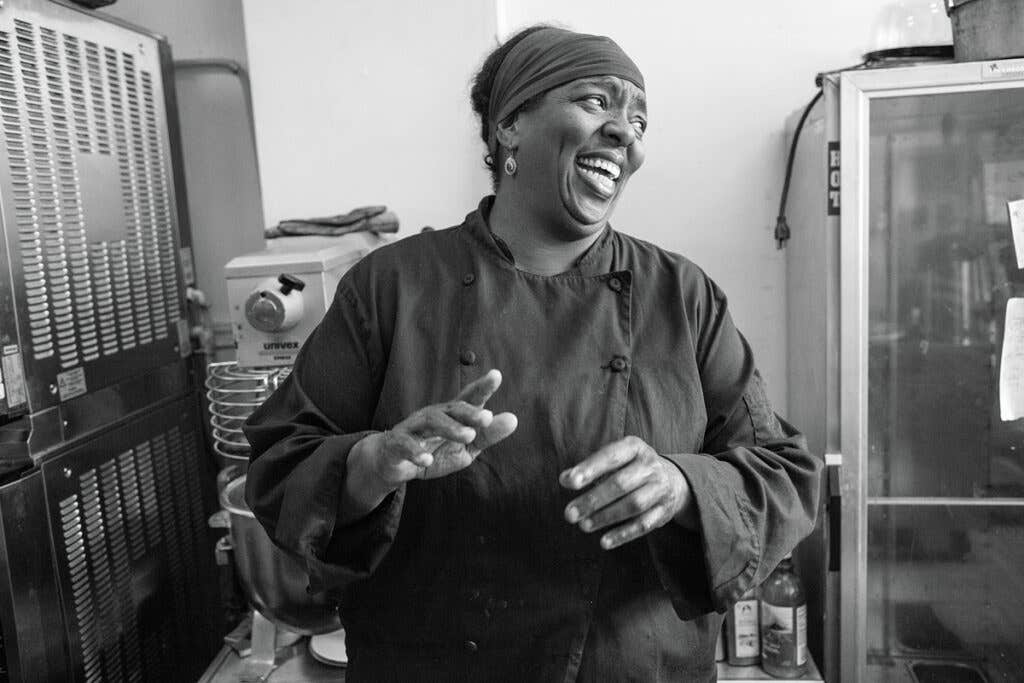
Like many Georgia natives, I have been crazy for pecans for as long as I can remember. Nanny, my maternal grandmother, would let us gather the nuts that fell from the magnificent old trees around her south Georgia home. Too arthritic to stoop, Nanny plucked pecans from the ground with what we called her "pecan-picker-upper," a broomstick attached to a metal box with a wire coil on one end. Espying a handful of pecans on the ground, Nanny would press down on her little gizmo, and—presto!—the nuts would pop magically into the cage. She would dump them into the deep pockets of her white canvas apron. Later, sitting at her kitchen table, she would shell, sort, and chop the nuts for fruitcakes stuffed with candied cherries, pineapple, citron, and pecans by the cupful.
Because pecan harvest coincides with Thanksgiving, every Southern holiday meal, in my experience, is a festival of pecans. My mother and our neighbor Fannie Boutwell would make nut-laden treats to give as gifts: pecan brittle; chewy, boozy bourbon balls; candied nuts glistening with a balsamic and brown sugar glaze; and snow-white meringues called divinity. My job was to press one pecan half into each little ball of divinity. (I loved doing that.)
The women of the family would bake perfect halves of the craggy, lobed nuts onto cheese wafers or make batches of spiced nuts smoky with paprika—addictive snacks so good we'd all fill up on them before the holiday meals. And if we ran out of nuts, there was always a tree nearby. When stubborn trees refused to release their clusters of pecans, grown men would climb into the sky with bamboo poles and beat them out. Not that we weren't fond of those trees. My friend Sarah "Tweet" Moore, a vivacious 90-year-old, speaks wistfully of the towering specimen that graced the dairy farm she and her husband, William Walter Moore Sr., ran outside Athens from 1950 to 1995. The Moores and their four children pampered that prized tree, and it returned the favor with an abundance of nuts. This time of year, Tweet's gnarled hands are dusted white from showering powdered sugar on buttery, pecan-filled orbs called wedding cookies, a specialty for which she is famed in her circle.
Indeed, it seems as if every Georgia home cook has his or her favorite recipe. In Atlanta, where I live, my favorite pecan dish is from Sweet Auburn Bread Company, a downtown bakery where chef Sonya Jones makes syrupy sticky buns drizzled with caramel sauce and sprinkled with crisped, coffee-colored pecan halves. When I head south of the city to visit family, I sometimes pull over at the roadside store of Ellis Bros. Pecans, a family business founded by Elliott Ellis in 1978. After one Thanksgiving, I tucked my head into the office there and saw Cile Ellis, Elliott's 76-year-old wife, sitting primly behind a desk. We talked pecans, and she showed me the clan's spiral-bound cookbook with its recipes for her mother-in-law Irene's pecan brittle, Irene's Uncooked Fruitcake, and a bar called Neiman Marcus, made with Duncan Hines cake mix and chopped nuts.
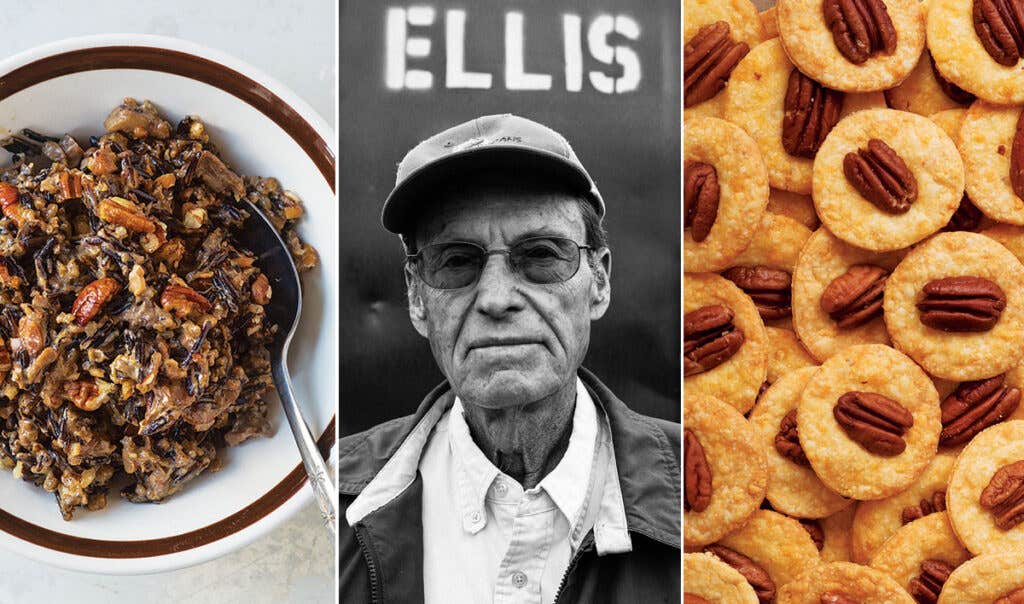
By the time the next year's pecan harvest rolled around, I had insinuated myself into the Ellis kitchen. While a sweet potato casserole encrusted with pecans bubbled in the oven, Cile poured me a glass of iced tea and put out salty, buttered nuts and glazed ones coated in sugar and sour cream. I asked about the cream cake I spied under a glass dome on her counter, and she corrected me: "It's pecan cream," the special cake she serves to her women's literary group, the Thalian Club, sliced and plated alongside a precise "six to eight" salted pecans and served with a cup of coffee. I take a bite—three unbelievably moist layers of nuts, coconut, and cream cheese frosting. This is no everyday dessert. It's a showstopper.
South of the Pearson and Ellis dynasties, my family lived at the bottom edge of the state's sprawling 160,000-acre pecan belt. Dougherty, Mitchell, and Lee counties—north of our home in Decatur County—form the historic hub of the Georgia pecan industry. There, as Kathleen Purvis describes it in her book Pecans (University of North Carolina Press, 2012), "The huge trees are planted in long rows, often covering acres and marching right up to the porches of gracious old homes." Much of the state's crop, she writes, derives from the early 20th century, when developers lured settlers to rural Georgia by planting trees on five-acre parcels and advertising them as lucrative pecan plantations. Around the same time, farmers like Pearson's grandfather John discovered the benefits of raising pecans alongside Georgia's most iconic crop, peaches. Conveniently, peaches are harvested in summer, pecans in autumn. At 12 years, as pecan trees start to mature, the peach trees begin to run their course and can be yanked up to allow the pecans to sprawl. The practice of planting pecans and peaches in tandem continues today in the region around Macon.
But the pecan's history in this country pre-dates real-estate and crop-rotating schemes. A species of hickory that is believed to have originated in Mexico and Texas and spread northward, the deciduous trees grew wild in America long before European settlers moved in. "In colonial times, most of the nuts were from the Illinois region, along the Mississippi River Valley," Lenny Wells, a horticulturalist with the University of Georgia extension service in Tifton, tells me. Foraged by trappers and traders and sent east to be sold, they were given the botanical name Carya illinoinensis, or Illinois nut tree.
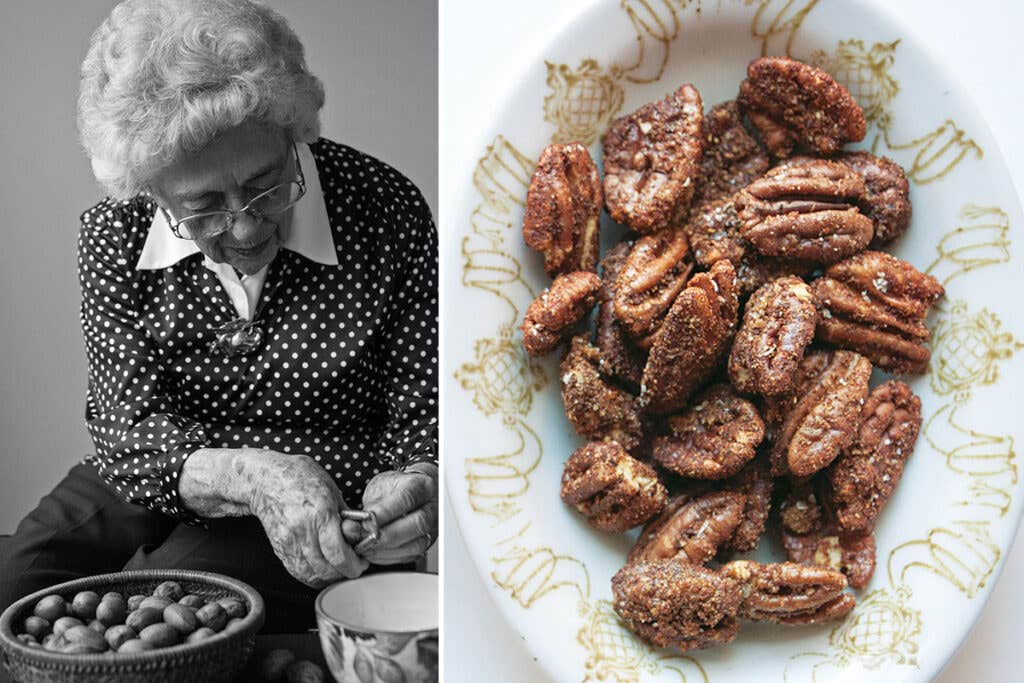
That's pure Yankee crazy talk, if you ask me. Not only did Southerners fast take charge of pecans' cultivation, but also, pecans aren't technically nuts. Coddled in an elegant veneer-thin oval shell, they are drupes, fruits with a central stone surrounded by a husk. Their fleshy green hulls eventually turn brown and open to spill what we recognize as the nut. The unshelled pecan, brown and mottled with black, is the equivalent of a peach pit. Crack it open, and there it is: the rich, buttery seed that we love to eat. Compared with most other tree nuts, including almonds and walnuts, pistachios and chestnuts, pecans have more fat. Their oil-rich creaminess and soft bite help make not only sweet but savory dishes—wild rice "dirtied" with chicken livers and nuts, Thanksgiving's bread stuffing, pan-seared trout drizzled in pecan-butter sauce—taste better.
Back on Pearson's Farm, he and I have found the harvesting equipment he'd wanted to show me. Vehicles with forklike prongs scoot around, grabbing massive trees by the trunks and shaking the bejesus out of them. Next come the sweeping machines, which blow the pecans into orderly rows for the mechanized harvesters that follow. When a harvester's basket is full, it sidles up next to a big truck. A worker pushes a button and the container tips, spilling nuts into the truck bed like an avalanche of marbles. It's a delicious cacophony—Nanny dumping out her little metal pecan-picker-upper a million times over. But the most majestic thing is seeing those big shakers do their handiwork. As the nuts fall from the sky, branches spring up like the limbs of a Christmas tree suddenly unburdened of ornaments, or a mighty oak evacuated by a murder of crows.
Pearson tells me he wishes his entire farm, including his 1,400 acres of peaches, was planted in pecans. Peaches are fickle, fussy, labor intensive. They can cause a farmer to lose sleep at night. Pecans are sturdy, forgiving, and strong enough to withstand the assault of these shaking, blowing, and sucking machines. They are also very, very tasty.
“I just like to eat 'em,” Pearson says, cracking into a preternaturally large Desirable and munching on its thumb-size kernel. I bite into one and it is a revelation of freshness, almost shockingly rich and supple. High-yield Stuarts, a good all-around nut, are Georgia's most common cultivar and probably what I have eaten all my life. Elliotts, some of Pearson's favorites, are petite, round, and far more luscious. But these huge, meaty Desirables aren't too shabby, either. No wonder China covets them.
By now Pearson, an amateur thespian who once gave a reading of Truman Capote's pecan-filled story “A Christmas Memory” at a community theater, is waxing poetic on all things pecan, nearly drooling at the thought of his late mama's syrupy pecan pie or an extravagant portion of butter-pecan ice cream. You name it; if it's got pecans in it, he likes it. “When they bake a pound cake, and somehow in there they fold in a streak of pecans and sugar and cinnamon, I can't hardly stand it! It's too much for me! It overwhelms me!”
Crunching, I giggle. I know what he means. Grabbing a few bags of Elliotts, I dream of the baking I'll do once I get home. Maybe I'll try one of those fluffy layer cakes. Or a batch of sticky buns. Just as I felt when I was a kid, I can't wait to dig into a pan of those warm, soft pastries. Butter, brown sugar, and toasted pecans: For a Southerner like me, that combination of flavors is the greatest of autumn's comforts.
Keep Reading
Continue to Next Story










